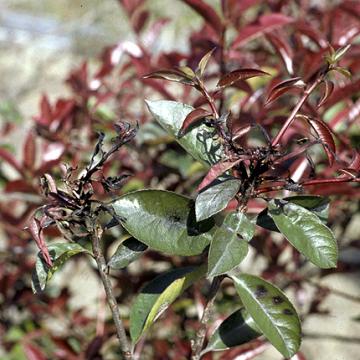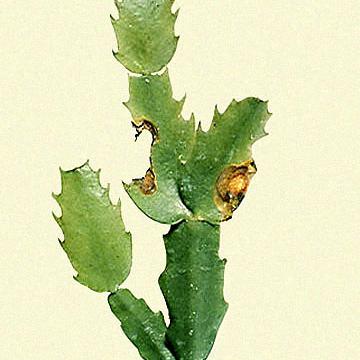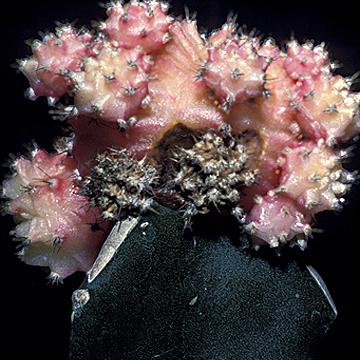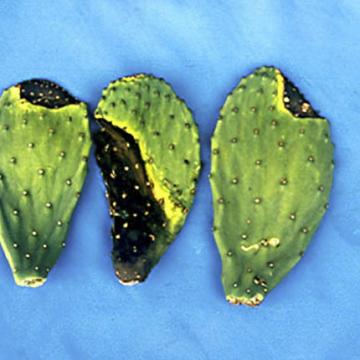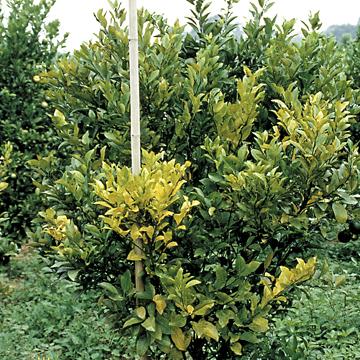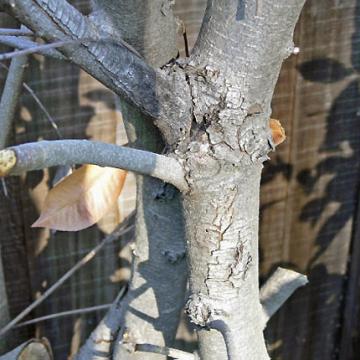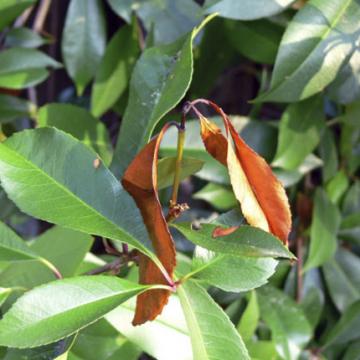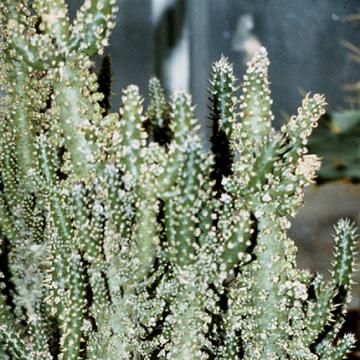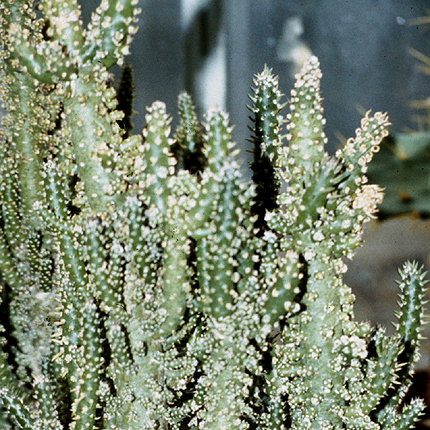DISEASE: Bacterial blight
HOST: Photinia
Symptoms of photinia bud blight shown here are similar to those of blast of pear and apple, caused by Pseudomonas syringae pv. syringae.
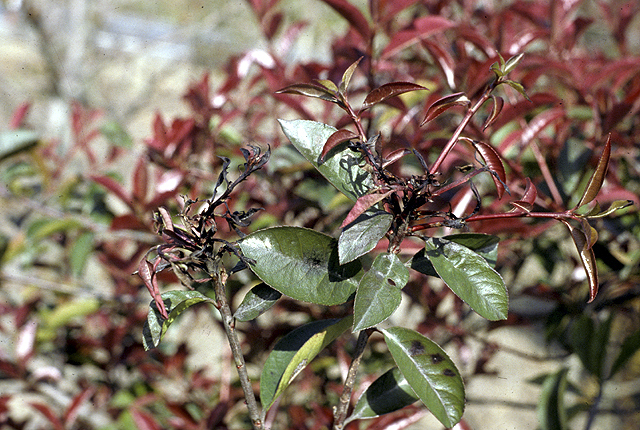
Bacterial blight | Photinia
DISEASE: Bacterial blight
HOST: Photinia (Photinia glabra)
PATHOGEN: Pseudomonas syringae pv. photiniae
SOURCE: M. Goto
DISEASE: Bacterial soft rot (Cladode rot)
HOST: Cactus
Brown necrotic areas of cladodes of Christmas cactus.
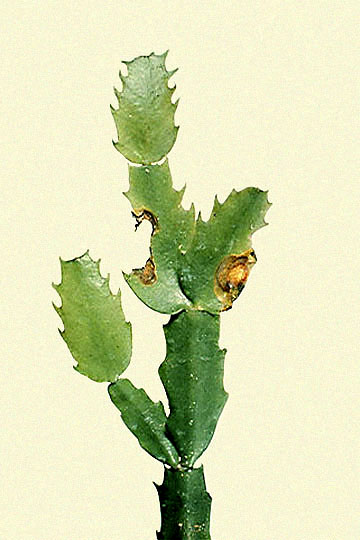
Bacterial soft rot (Cladode rot) | Cactus
DISEASE: Bacterial soft rot (Cladode rot)
HOST: Cactus (Schlumbergera × buckleyi)
PATHOGEN: Pectobacterium carotovorum
PATHOGEN SYNONYM: Erwinia carotovora subsp. carotovora
SOURCE: A. Alvarez
DISEASE: Bacterial soft rot
HOST: Cactus
Soft rot of grafted cactus.
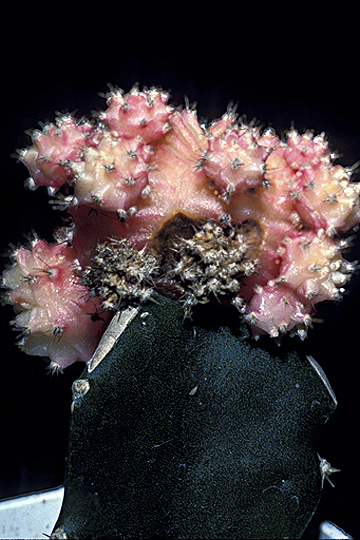
Bacterial soft rot | Cactus
DISEASE: Bacterial soft rot
HOST: Cactus ()
PATHOGEN: Pectobacterium carotovorum
PATHOGEN SYNONYM: Erwinia carotovora subsp. carotovora
SOURCE: R. Raabe
DISEASE: Bacterial soft rot
HOST: Cactus
Black, soft, decayed areas of Indian fig cladodes.

Bacterial soft rot | Cactus
DISEASE: Bacterial soft rot
HOST: Cactus (Opuntia ficus-indica)
PATHOGEN: Pectobacterium carotovorum
PATHOGEN SYNONYM: Erwinia carotovora subsp. carotovora
SOURCE: L. Fucikovsky
DISEASE: Citrus greening (Huanglongbing)
HOST: Citrus (Mandarin orange)
The bacterium invades the tree slowly, leading to yellowing of the entire canopy. Pale yellow, blotchy mottled leaves are reduced in size.
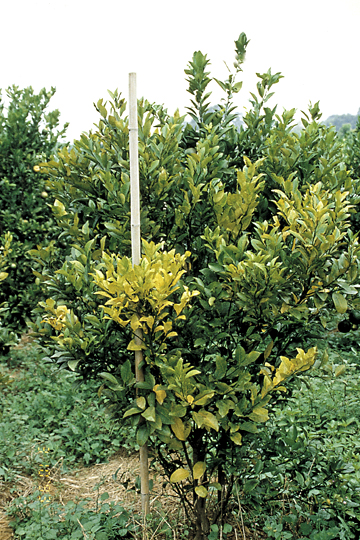
Citrus greening (Huanglongbing) | Citrus (Mandarin orange)
DISEASE: Citrus greening (Huanglongbing)
HOST: Citrus (Mandarin orange) (Citrus reticulata)
PATHOGEN: 'Candidatus Liberibacter asiaticus'
PATHOGEN SYNONYM: Candidatus Liberobacter asiaticus
SOURCE: S. M. Garnsey
DISEASE: Fire blight
HOST: Photinia
Fire blight cankers on photinia.
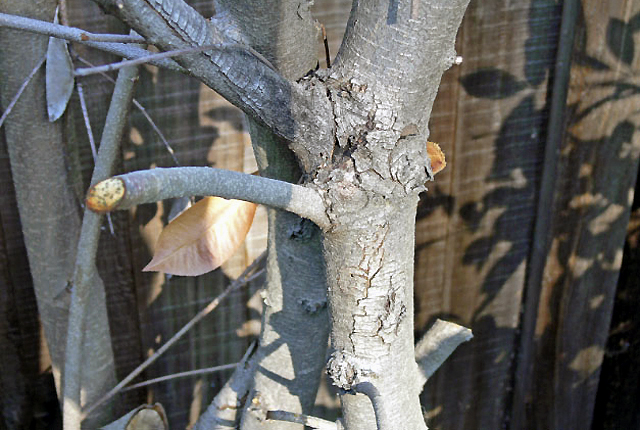
Fire blight | Photinia
DISEASE: Fire blight
HOST: Photinia (Photinia fraseri)
PATHOGEN: Erwinia amylovora
SOURCE: M. Schroth
DISEASE: Fire blight
HOST: Photinia
Typical crook neck symptom of infected shoot.
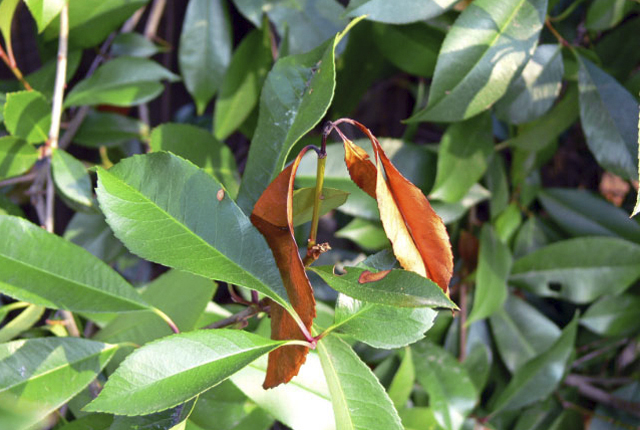
Fire blight | Photinia
DISEASE: Fire blight
HOST: Photinia (Photinia fraseri)
PATHOGEN: Erwinia amylovora
SOURCE: M. Schroth


